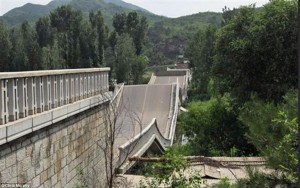The situation is like this: A major problem occurs in a bridge abutment and significant differential settlement between abutment and road is observed. The Owner decides to investigate the situation and assigns the job to a joint collaboration between a University and a Geotechnical Consultancy Firm.
The collaboration requests the execution of three boreholes to a depth of 30m, execute a number of consolidation tests some in a private laboratory and some in the laboratory of the University, together with other appropriate soil tests such as gradation, shear strength etc.
The collaboration provides a report in which it is stated that the previous geotechnical investigation did not evaluate properly the soil conditions because only one (1) drilling of 20m depth was executed in the abutment and did not evaluate properly the thickness of a compressible clay layer. Also based on the 15 consolidation tests executed by the collaboration, the coefficient of consolidation and the preconsolidation pressure estimated by the previous Geotechnical Consultant were optimistic. The previous consultant had executed three (3) consolidation tests.
So the conclusion of the report was that the problem was due to the optimistic evaluation of settlements made by the previous Geotechnical Consultant which had executed only one (1) drilling of twenty (20) meters and limited consolidation testing.
It is very easy to come to a “correct” solution after a significant amount of geotechnical investigation (money spent) has been executed in an area where a problem has occurred. The problem is known, some geotechnical information is available and the investigation can be targeted appropriately.
But how easy is this to be done from the start of a project? Most people involved in geotechnical investigation know how difficult is to persuade the Owner, Contractor etc to execute even the minimum required investigation not to mention the increased difficulty to persuade for additional investigation in an area where a hint of geotechnical problem is speculated.
In the fast track way that most projects are executed these days how can the geotechnical investigation and design produce “accurate” results?
How can we persuade the Clients that less is not more in geotechnical investigation and design? Food for thought.

